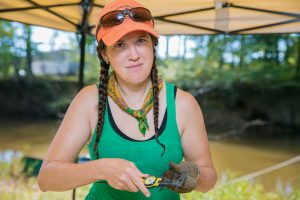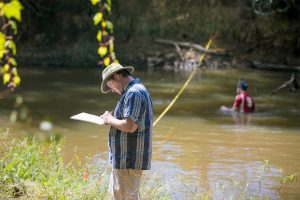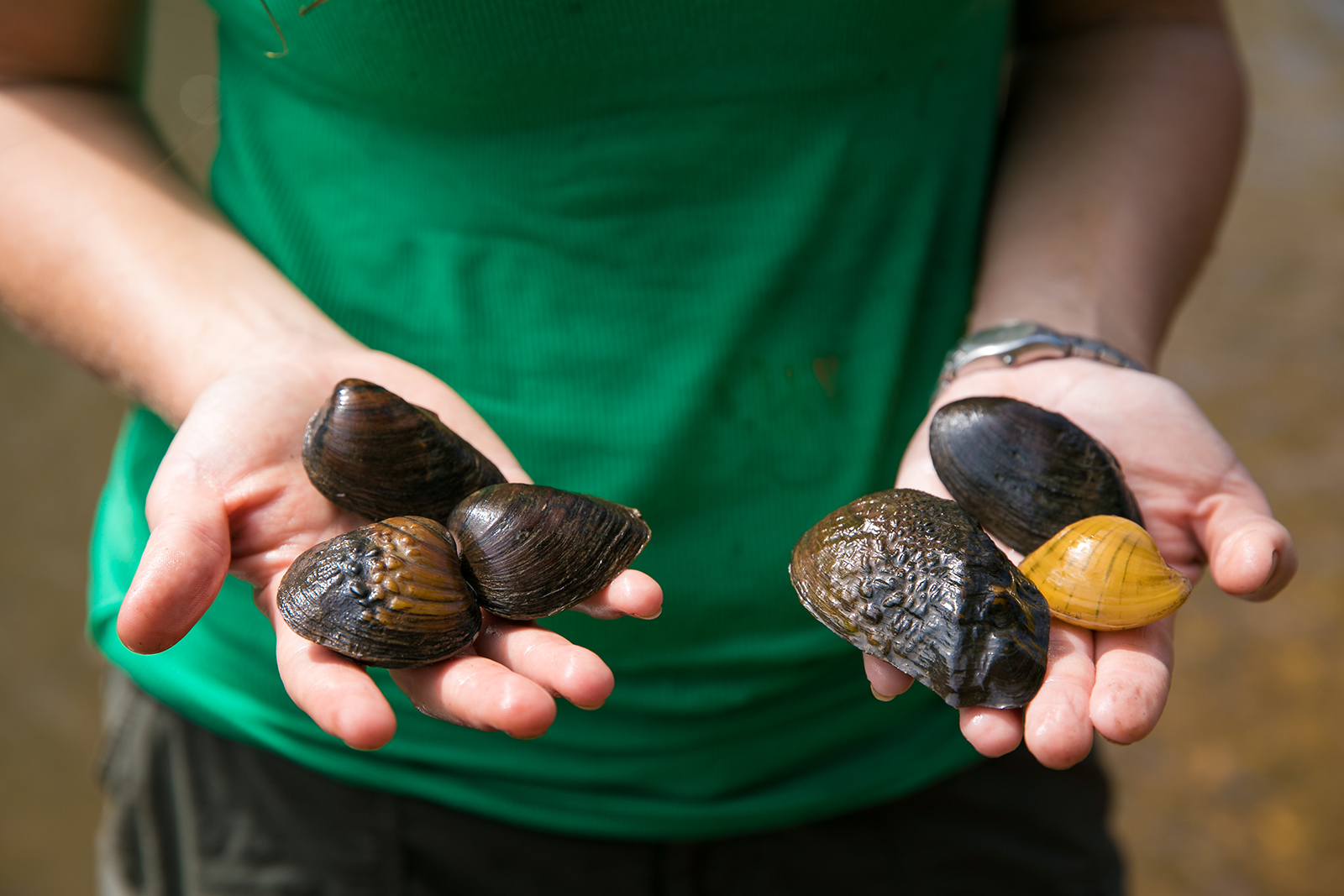
TUSCALOOSA, Ala. — More than 70 percent of freshwater mussels are imperiled as human development has harmed river ecosystems, yet little is known about how biodiversity within species of mussels influences their function as filters and engineers of the water.
A nearly $1.8 million project, led by The University of Alabama, hopes to identify the processes and mechanisms that underlie patterns of biodiversity in these animals. This will better arm managers of environmental resources to make informed decisions for conservation and restoration efforts that benefit the entire ecosystem.
“Freshwater mussels are critical for habitat,” said Dr. Carla Atkinson, UA assistant professor of biological sciences, who is leading the project. “We have really high biodiversity in this state, and different species do different things, so you want to have high diversity if you want to maintain those biological functions.”
Along with Atkinson, the research team includes Dr. Jeff Lozier, a UA associate professor of biological sciences, as well as two researchers from the University of Mississippi: Drs. Colin Jackson, professor of biology, and Ryan Garrick, associate professor of biology.
The project is one of 10 funded through the National Science Foundation’s Dimensions of Biodiversity program to research processes in nature and their complex interactions with climate, land use and invasive species at local, regional and continental scales.
Despite centuries of discovery, most of our planet’s biodiversity remains unknown. The scale of the unknown is especially troubling given the rapid and permanent loss of biodiversity across the globe. The goal of the Dimensions of Biodiversity campaign is to transform how we describe and understand the scope and role of life on Earth.
This campaign promotes novel integrative approaches to fill the most substantial gaps in our understanding of the diversity of life. It takes a broad view of biodiversity, and it focuses on the intersection of genetic, phylogenetic, and functional dimensions of biodiversity. The projects all integrate these three dimensions to understand interactions and feedbacks among them.
During the project, Atkinson’s team will study mussels from seven rivers, five in Alabama along with one in Tennessee and another in Mississippi. They seek to understand how different species of mussels in the same watershed perform different functions, seeing how environmental factors such as placement, temperature and water flow influence their roles in the river.

For instance, one spot in the Sipsey River in Greene County, Alabama, has more than 20 different species in one bend of the river. The team wants to know how the filter-feeders avoid direct competition for seemingly the same food. With data and experiments from the field, combined with experiments conducted in the laboratory, the researchers will determine the ecological functions mussels contribute to the water.
Atkinson’s work aims to examine the role these animals play in river ecosystems including their capacity to filter-feed and influence nutrient cycling in streams.
“We’re hoping to see what’s driving populations of these organisms,” Atkinson said. “We are trying to understand population ecology and the community structure of mussels because as water flows changes in the Southeast because of water extraction, water use and global climate change, we need to know how that will influence the population of these organisms.”
Lozier, whose background is using the genetics of an animal population to answer evolutionary and ecological questions, will examine the genomes of different mussel species and populations across the study area. That information, combined with environmental data from the field and observations from mussels in the lab, can lead to understanding why different species, or even the same species in different locations, show different levels of genetic variation.
“We’re looking at how genetic variation scales with community-level estimates for mussels and their microbes,” Lozier said. “It’s very rare to have all the community-level data together with all the genetic data and ecological data, so this is a unique project.”
The University of Mississippi team will focus on different aspects of biodiversity in this system. Jackson will study the communities of gut microorganisms that inhabit different mussel populations and species, which might contribute to where mussels live and how they function in the river. Garrick will examine resolving the evolutionary history of mussels to understand how biodiversity of this group, and evolutionary interactions with their associated microbes, may have changed over time.
Contact
Adam Jones, UA communications, 205-348-4328, adam.jones@ua.edu
